Making feather lei is a complex skill passed down through generations in Hawaiian culture. The bird feathers in these lei come from native birds like the 'i'iwi, 'apapane, and mamo. These birds have bright colors and are beautiful. They carefully clean, sort, and arrange these feathers in intricate patterns to create stunning and unique designs.
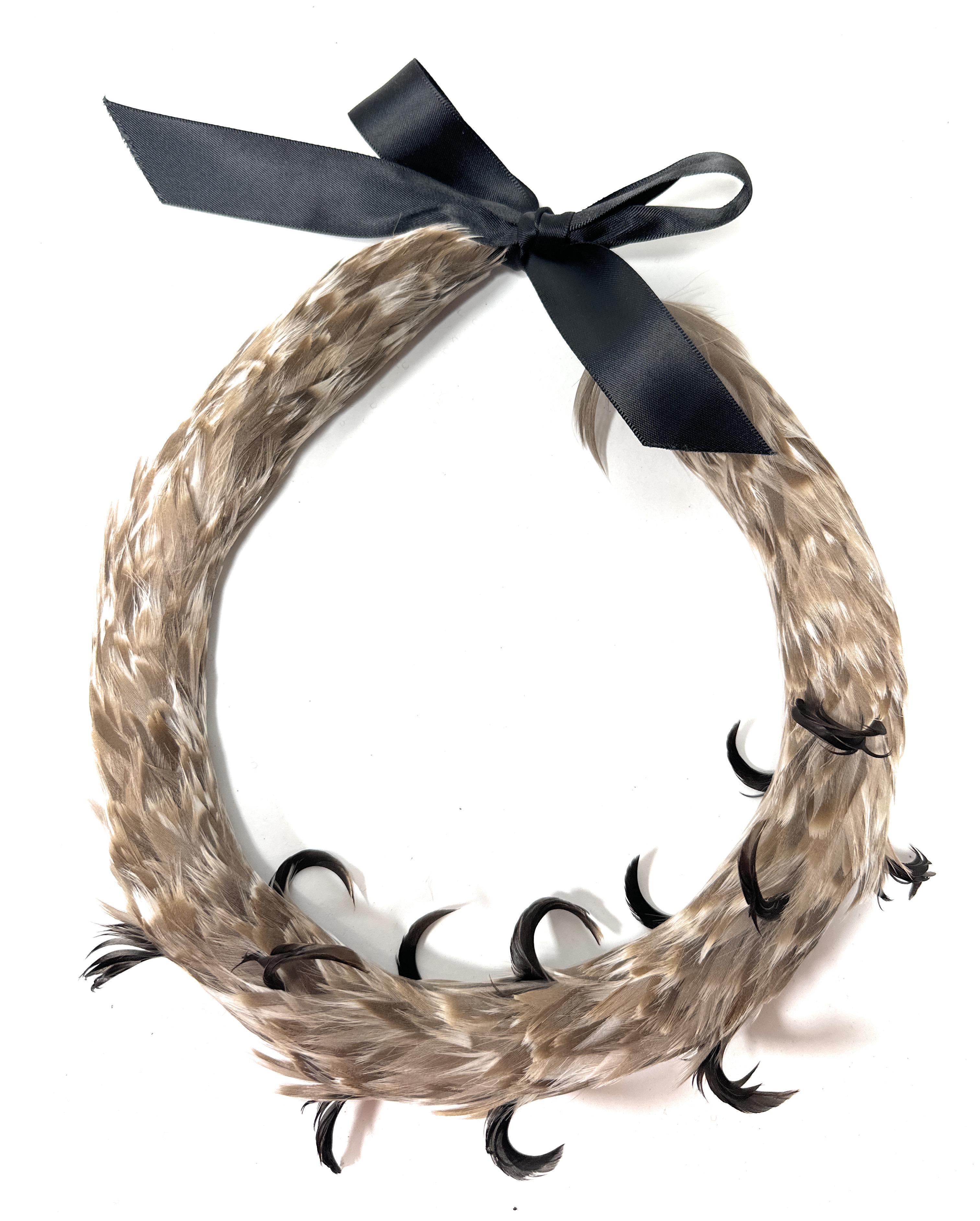
Feather leis in Hawaiian tradition symbolize status, power, and have cultural and spiritual importance. Giving a feather lei is a way to show respect and honor. People often give it to show appreciation or celebrate special events like weddings, graduations, or important milestones.
The craftsmanship and artistry of feather lei making is a labor of love that requires patience, skill, and dedication. Each lei is a work of art that reflects the natural beauty and rich cultural heritage of Hawaii.
Feather lei have a long-standing tradition in Hawaiian culture, dating back to ancient times. Hawaiian royalty originally wore them, considering them a symbol of status and power. The detailed work and bright colors of the feathers in the lei showed the beauty of the islands.
Many birds on Mauna Kea are close to disappearing, but conservation groups are helping them increase in numbers. Hawaiian forest birds living in national parks have been thriving.
Today, Hawaiians still treasure feather lei as a symbol of their culture and pride. Those who wear them do so with a deep sense of respect and honor for the traditions of their ancestors. In Hawaii, individuals adorn themselves with leis during significant occasions such as weddings and graduation ceremonies. They remind people of the Hawaiian culture and history.
In the past, only powerful people could wear feather lei and other traditional clothes. These people were respected leaders for their connection to the land and their ability to uphold Hawaiian values.
Feather lei are important in Hawaiian culture, symbolizing the strong bond Hawaiians have with their land, history, and traditions.
Hawaiians greatly esteem the craft of creating feather lei because they view it as a talent that demands patience and time. Now, many experienced lei hulu makers are still spending their time and love on this traditional art form. Boris Huang learned from famous feather artist Aunty Mary Lou Kekuewa and is now a skilled feather artist.
Some older artists continue to teach how to make feather leis and invite the public to learn this important skill. They share their knowledge with younger people and inspire the Hawaiian hulu maker community. Artisans today utilize feathers from responsibly obtained birds such as geese, pheasants, and peacocks to manufacture all feather leis. Currently, there are no manufacturers producing feather leis from endangered Hawaiian bird species.
Individuals select feathers for creating feather leis across the Hawaiian islands from forest bird but not the endangered birds. Place these on a string made from aha or olona.
Coconut husks are the source of Aha. O_lona_ originates from a Hawaiian shrub. The artist arranged the feathers in a specific pattern or design, creating a beautiful and intricate piece of art.
Some people sew feather leis onto a base for support, while others hand-tie them with a needle and thread. This careful process needs skill and patience. You must put each feather in the right place to achieve the desired look.
Hawaiian culture has passed down the tradition of making feather leis for generations. Each lei tells a special story or meaning. People often wear these leis during special occasions or ceremonies to symbolize love, respect, and the aloha spirit. In Hawaiian culture, feather leis hold importance because skilled artisans make them with attention to detail.
In Hawaiian culture, people choose the colors of feather lei for their beauty and symbolic meanings. Each color holds significance and people believe it represents different aspects of life and spirituality.
For example, a yellow feather in a lei may symbolize increased brightness and positivity in one's life. Many believe it brings joy, optimism, and a sense of renewal. A white feather in a lei often symbolizes purity, innocence, and peace. It can remind us of loved ones who have died, giving comfort and a feeling of connection to the spiritual world.
In addition to yellow and white feathers, other colors in feather leis also hold symbolic meanings. Red feathers may represent passion, love, and vitality, while green feathers can symbolize growth, harmony, and balance. People often associate blue feathers with tranquility, wisdom, and communication, while black feathers may signify protection, strength, and resilience.
In Hawaiian culture, people deeply intertwine the colors of feather leis with spiritual beliefs and occurrences. They serve as a way to connect with nature, honor ancestors, and bring positive energy into one's life. Feather leis are pretty decorations with meaning when worn at events or given as gifts.
Green is a nurturing hue symbolizing love, tranquility, and unity. Observing a green feather signifies positive developments are on the horizon, such as improvement and advancement in your life.
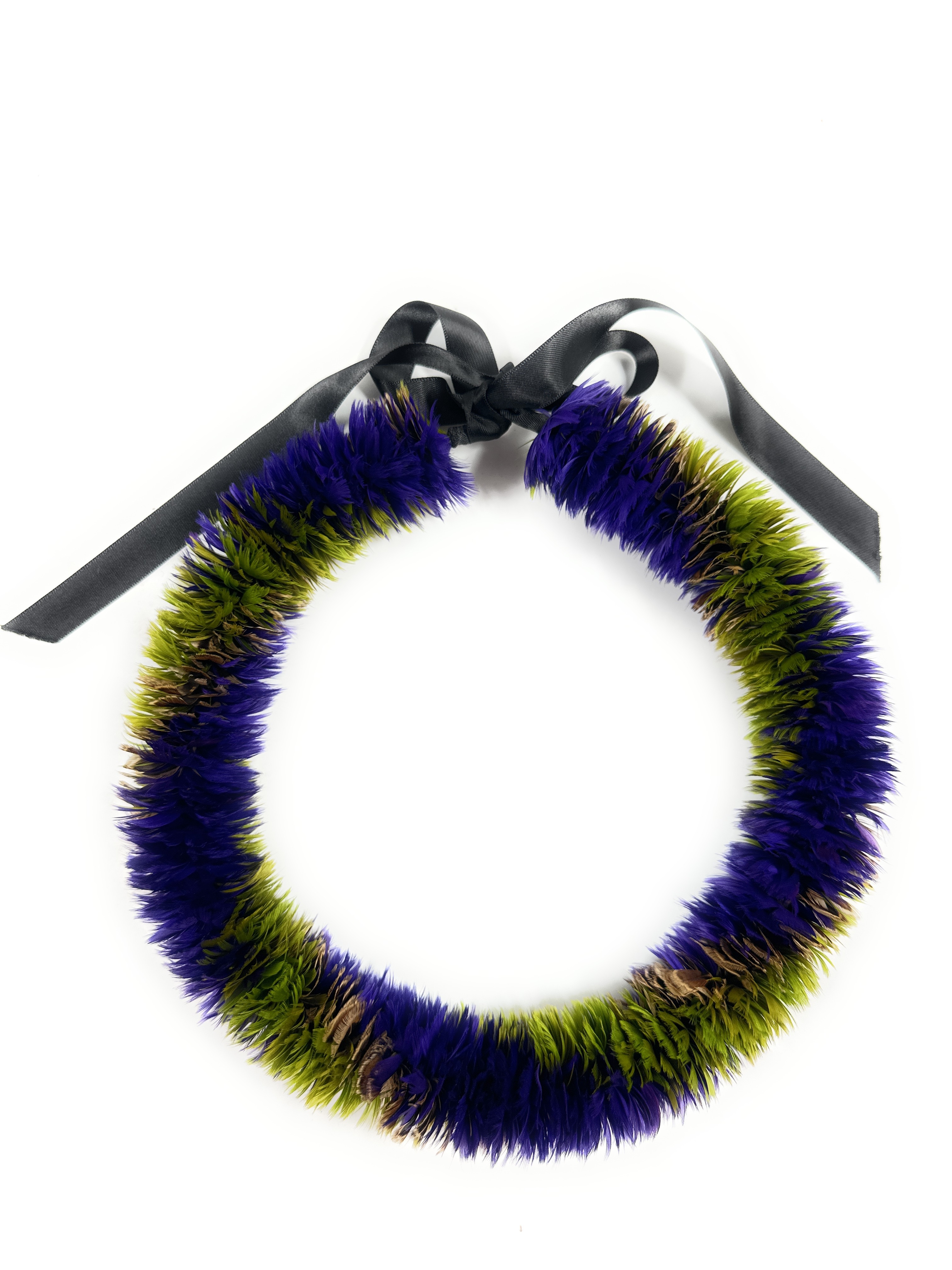
Red is another color with diverse interpretations. It symbolizes bravery and power, embodying the capacity to conquer fear. Seeing a red feather also suggests that things will eventually turn out positively in your life.
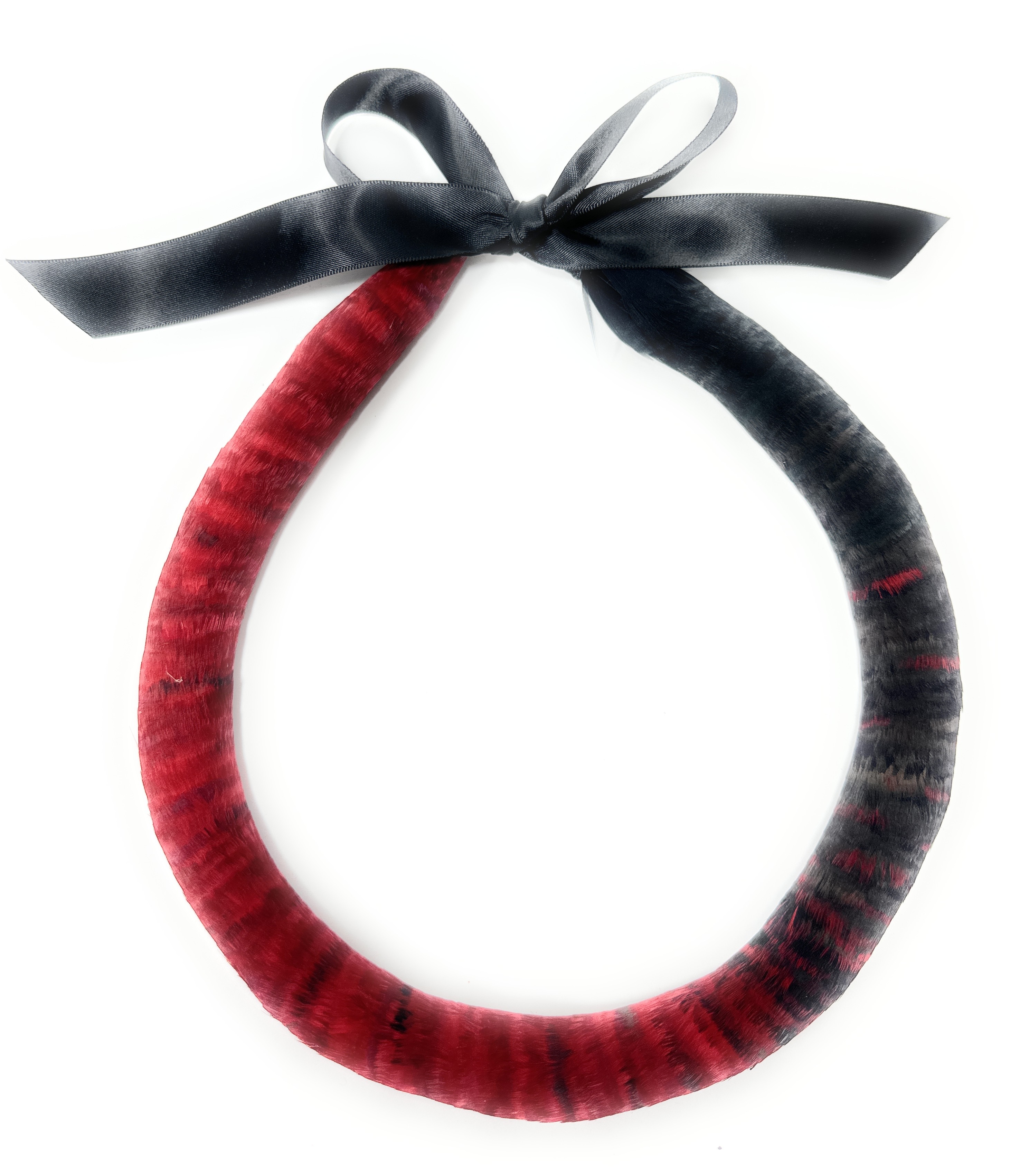
Yellow signifies a prosperous future. Yellow plumes were less common than red ones, making garments mainly yellow the most prized. Experts project that nearly half a million tiny feathers will adorn the largest cloaks. Cloaks were treasured possessions, handed down through the generations as family heirlooms.
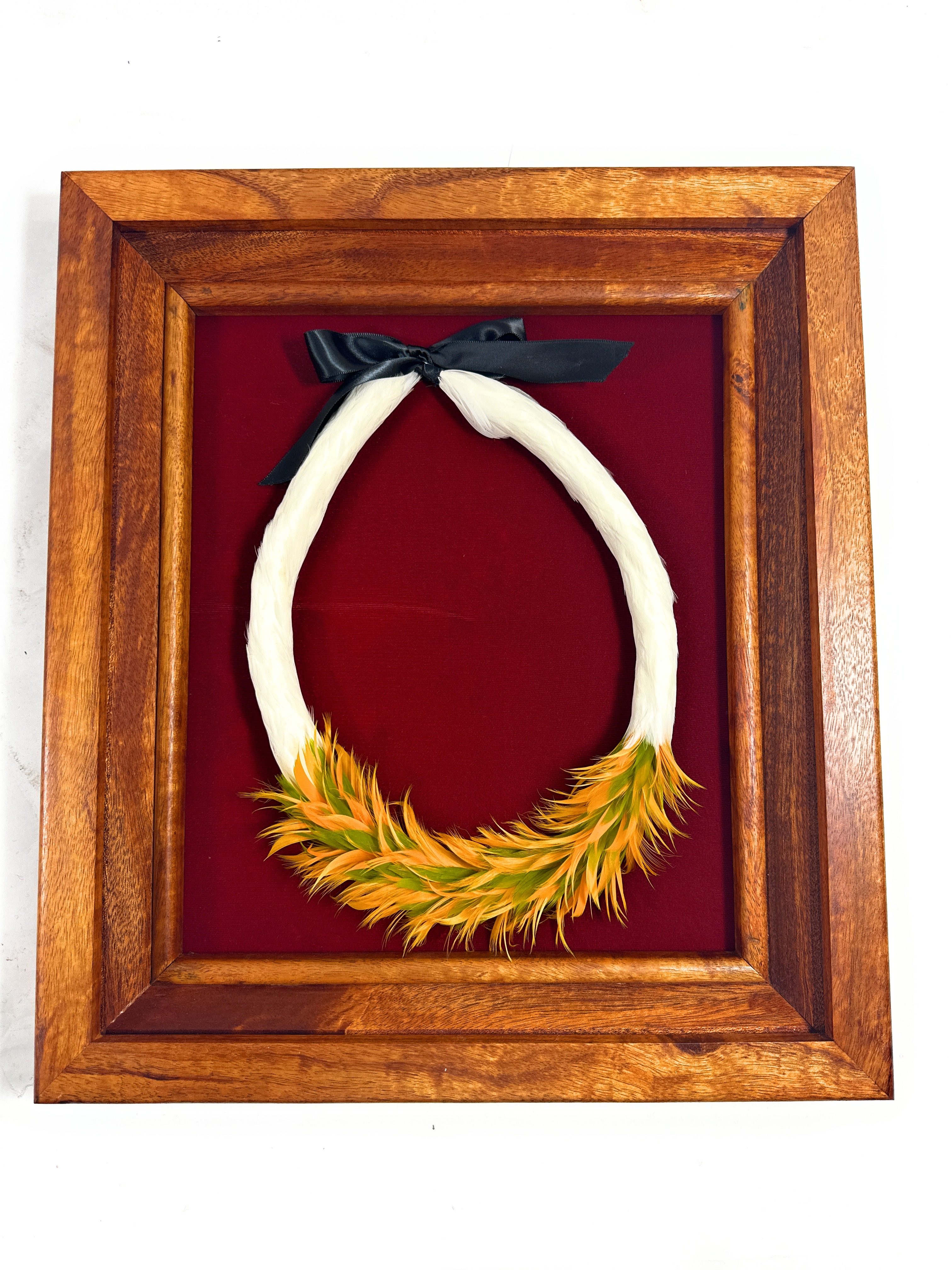
Purple signifies spirituality, regality, and enchantment. It also embodies the capacity to perceive matters from a unique viewpoint and utilize this understanding to assist others.
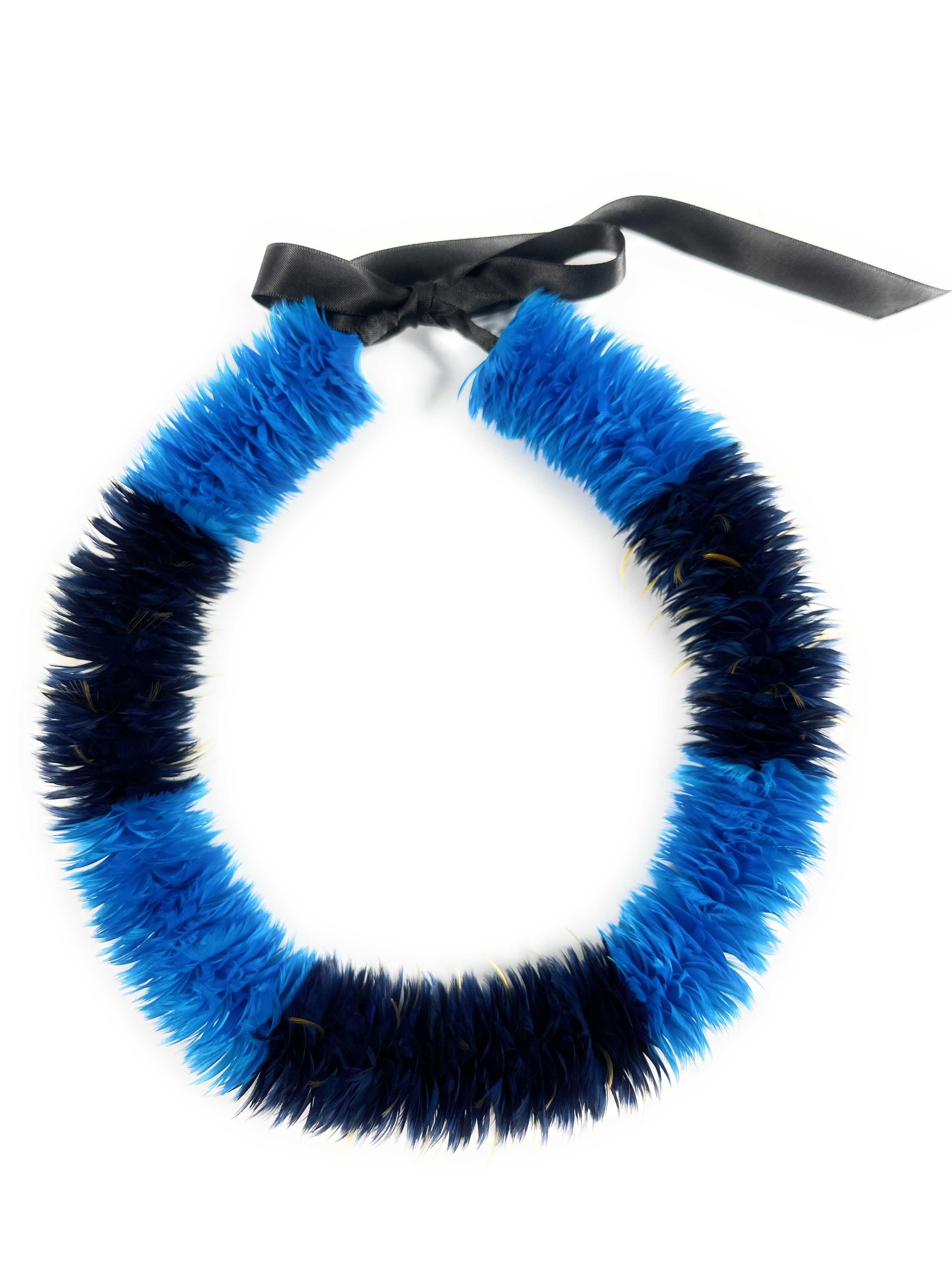

Grey symbolizes knowledge and experience. It serves as a prompt to evaluate your desires in life and establish objectives for yourself.
Visit Tikimaster.com's feather lei collection online or in person at the warehouse in Kailua, Oahu.




